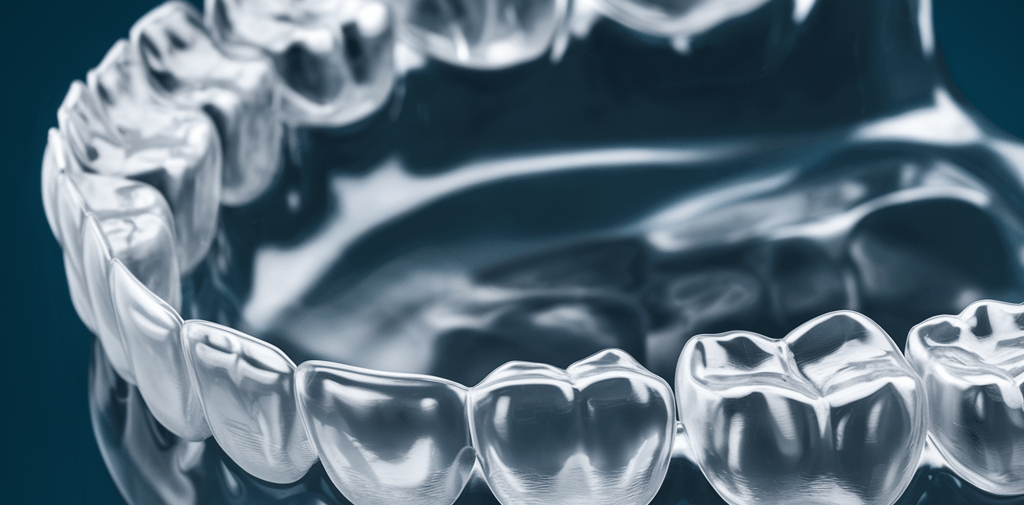Clear Aligners for Patients with Bruxism: Can They Withstand the Pressure?
Bruxism, or teeth grinding, is a condition affecting millions worldwide, often leading to dental wear, jaw discomfort, and even TMJ disorders. For orthodontic patients with bruxism, clear aligners offer a modern alternative to traditional braces, but the question remains: can these aligners withstand the intense forces associated with teeth grinding?
Azeem Jameel
10/3/20242 min read


Clear Aligners for Patients with Bruxism: Can They Withstand the Pressure?
Bruxism, or teeth grinding, is a condition affecting millions worldwide, often leading to dental wear, jaw discomfort, and even TMJ disorders. For orthodontic patients with bruxism, clear aligners offer a modern alternative to traditional braces, but the question remains: can these aligners withstand the intense forces associated with teeth grinding?
Understanding Bruxism and Its Effects
Bruxism occurs during sleep or wakefulness, exerting forces much higher than normal chewing. These forces can cause enamel erosion, tooth mobility, and jaw strain, making it crucial to consider how orthodontic appliances interact with this condition.
Clear Aligners and Bruxism: Structural Integrity
Clear aligners, made from durable thermoplastic materials, are designed to manage normal orthodontic forces, but bruxism presents a unique challenge. Recent 2024 studies have tested the durability of these aligners under the high-stress conditions of bruxism. While aligners can tolerate regular stress, frequent and intense grinding can cause them to wear out faster, especially in patients with severe bruxism.
Some manufacturers have introduced thicker aligners or reinforced materials to counteract these effects. These innovations, as noted in recent research, can extend the lifespan of aligners for bruxism patients without compromising the desired tooth movement.
Dual Function: Aligners as Protective Splints?
Interestingly, some research from 2024 suggests that clear aligners may serve a dual purpose for bruxism patients. Aligners act as a barrier between teeth, reducing wear during grinding episodes, much like traditional night guards. However, while aligners offer some protection, they are not as robust as custom-made night guards specifically designed for bruxism.
For patients with mild to moderate bruxism, aligners can provide adequate protection and orthodontic correction. For more severe cases, combining aligner therapy with a custom night guard during sleep may be the best solution to prevent excessive wear.
Impact on Treatment Duration and Results
Bruxism can potentially affect the speed and success of clear aligner treatment. The excessive forces generated during grinding may lead to micro-movements that disrupt planned tooth shifts. A 2024 clinical study highlighted that bruxism patients wearing clear aligners sometimes experienced slower tooth movement compared to non-bruxism patients, though treatment could still achieve the desired results.
Orthodontists need to closely monitor patients with bruxism, adjusting treatment plans as needed. Some experts recommend more frequent aligner changes or using more robust aligner sets to ensure the treatment progresses efficiently despite the added pressure from grinding.
Conclusion: Can Clear Aligners Withstand the Pressure?
For patients with bruxism, clear aligners remain a viable treatment option, but careful consideration is necessary. Aligners can withstand moderate levels of pressure, particularly with advances in material strength, but severe bruxism may require additional intervention, such as wearing a night guard alongside the aligners.
Continued research into aligner materials and the dual function of aligners as protective devices may further improve outcomes for bruxism patients in the future. For now, collaboration between the patient and orthodontist is key to ensuring optimal results, balancing orthodontic needs with protection against bruxism's effects.

Connect
Social Accounts
+1 830 7451 586
Building 595, Block H3, Phase 2
Johar town, Lahore Pakistan
Address
Mail at:
Call at:


ClearCare Ortho offers premium-quality, exceptionally clear, and affordable orthodontic aligner treatments worldwide.
© 2023 Copyright ClearCare Ortho All Right Reserved.
info@clearcareortho.com
